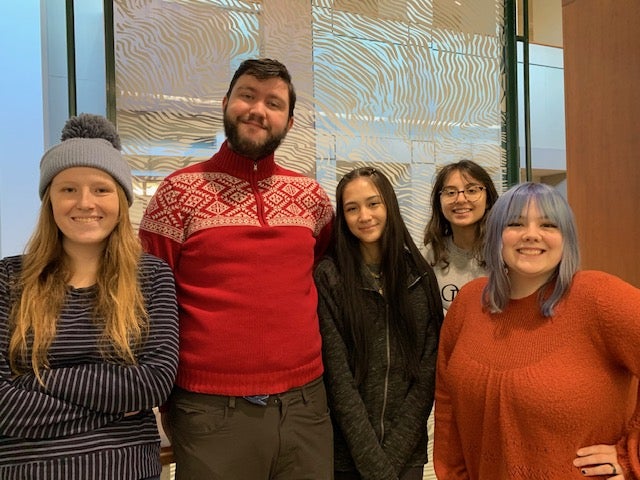
Interactive showcase Friday, March 10
Join Albertsons Library’s Disinfo Squad for an interactive showcase of the students’ semester-long training as peer educators and social media influencers. The squad is working to counter the public’s vulnerability to disinformation. Each student will present a lightning talk and provide examples of their social media work, while engaging visitors in some of the games used in their training. The event will take place in room 201C from 2:00 – 3:00 p.m.
Blog series
This article is the first in a series of blogs written by the Disinfo Squad, a disinformation research unit funded by a grant from the U.S. Department of Homeland Security. Elizabeth Ramsey, associate professor/librarian at Albertsons Library and Isaac Castellano, clinical assistant professor with the School of Public Service are two of the faculty members involved with the project.
Don’t believe everything on the internet
Social media is almost impossible to avoid nowadays, from Facebook to Snapchat, almost everyone of every age has had or currently has a social media account of some kind. The major purpose of social media is exactly what it sounds like, to socialize and share.
As kids, most of us were taught to not believe everything we saw on the internet. We were warned of stranger danger and false information relentlessly by our parents and grandparents. These tend to be the same people who send us links over FaceBook messenger about the brand new GoFundMe for the Nigerian prince that has been asking for their credit card information.
Misleading headlines?
Most of the time, we are able to recognize this misinformation clearly and quickly. We see it all the time as ads claiming to be cures for chronic diseases and for products that claim to solve every problem we could have. We can recognize them almost instantly, but what happens when these instances of misinformation become more and more believable? How many times have we seen headlines about political officials quotes as saying something completely arbitrary? Headlines that are meant to insight fear and panic from whoever is unlucky enough to come across it? Photos taken completely out of context?
There’s a way to avoid this, although it is likely a lot different than what many of us were taught in middle and high school.
When we think about finding reliable sources, many of us who grew up surrounded by the internet think of the CRAAP test, never using sources that have a .com at the end, or the most emphasized: DO NOT USE WIKIPEDIA. Well, many of those methods of identifying reliable sources can be helpful, they are actually very inaccurate.
Verifying websites
Lateral reading is what is used by professional fact-checkers, those hired by notoriously reliable sources such as the New York Times or educational websites. Many of us were taught to interrogate the source that we are viewing. Look for citations, the quality of the website, and the credentials of the author. What is not taught is how often all of the above can be used to mislead the audience. Lateral reading does not rely on the source itself, but rather what others have to say about the source.
Verifying a website through multiple other sources is incredibly effective for finding out the truth of an organization. For example, the website abcnews.com.co (not to be confused with abcnews.go.com, the actual URL for ABC News) mimics ABC News’ logo as well as format. Abcnews.com.co looks incredibly convincing at first glance, but when one looks up the title on a search engine like Safari or Google, it is easy to find that abcnews.com.co is notorious for creating false headlines and spreading harmful misinformation. Laterally researching the creators or authors of potential misinformation can also reveal any potential motives or history that could discredit the source. A typically useful source for laterally reading is Wikipedia. Contrary to what many of us heard in school over and over again, Wikipedia can be a credible source for identifying misinformation.
Caring before sharing
It is incredibly important to verify the information that we are receiving before sharing it. Many of the methods that we have been taught via the education system are flawed. While identifying misinformation seems simple and obvious, it is only easy when done using an effective method, such as lateral reading.
by Moesha Aplicano-Burnham, first year, majoring in English literature